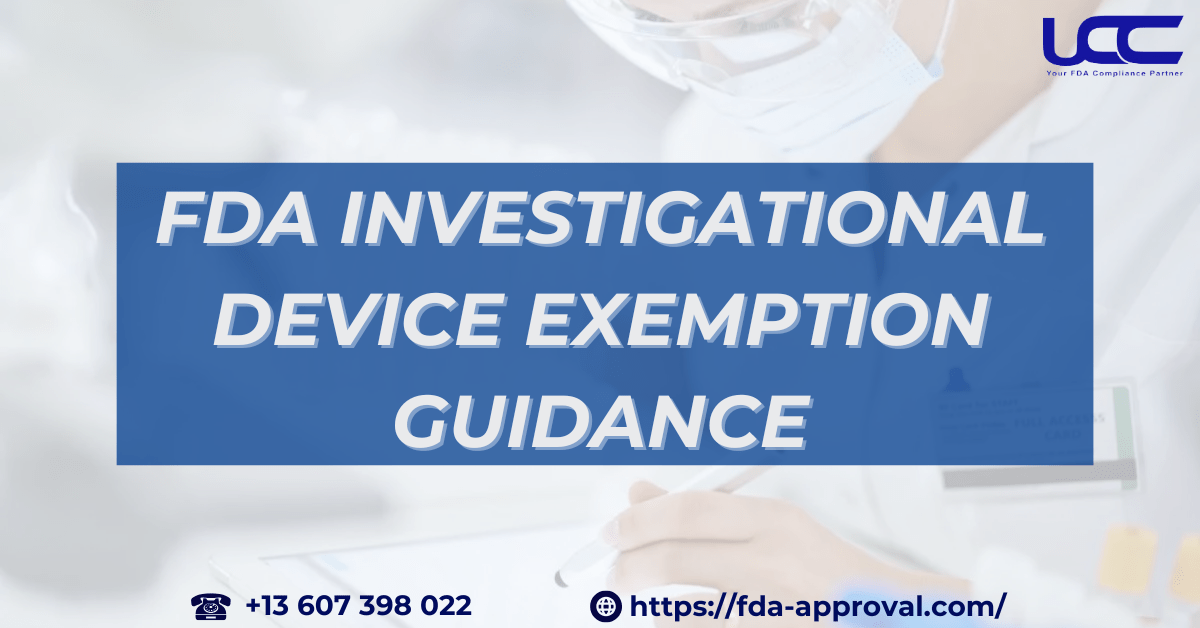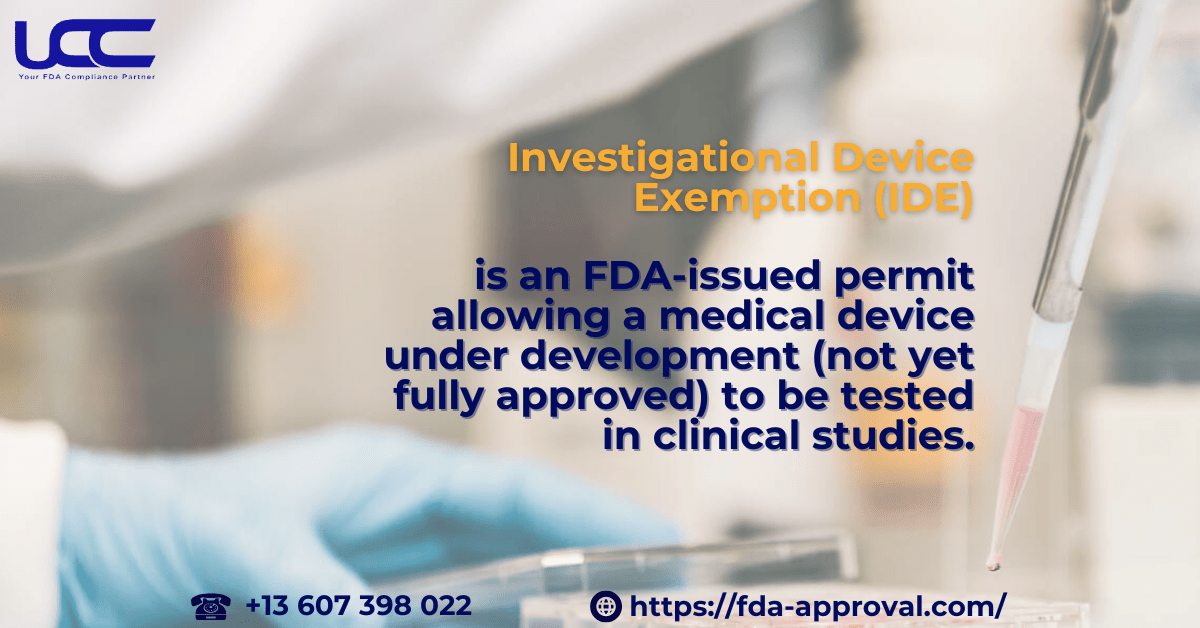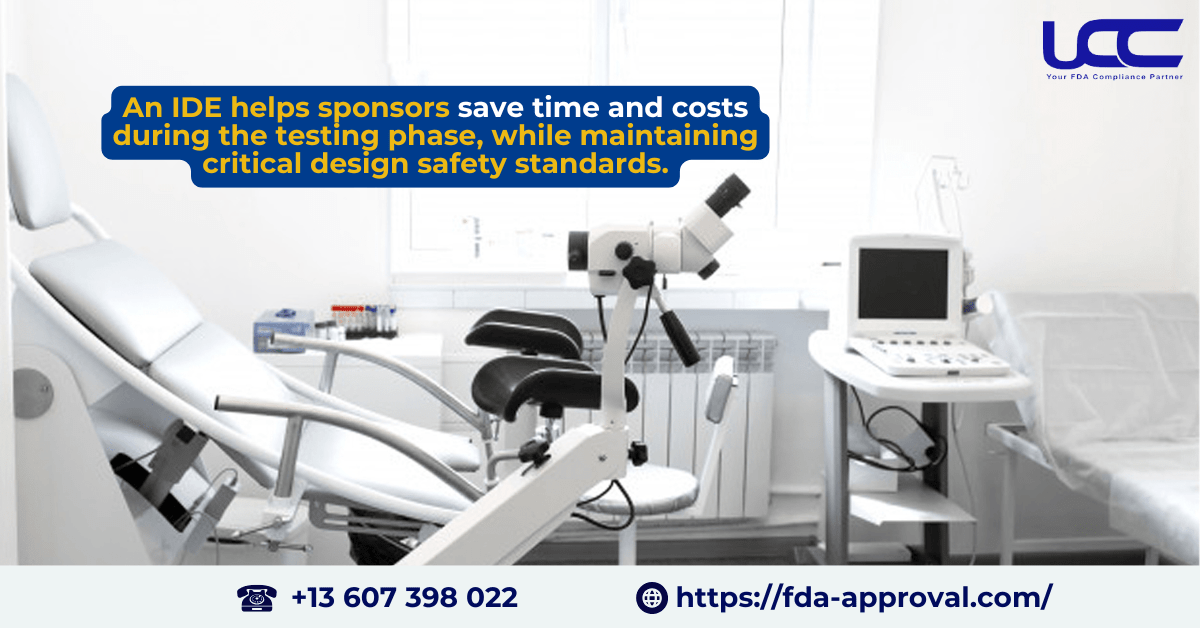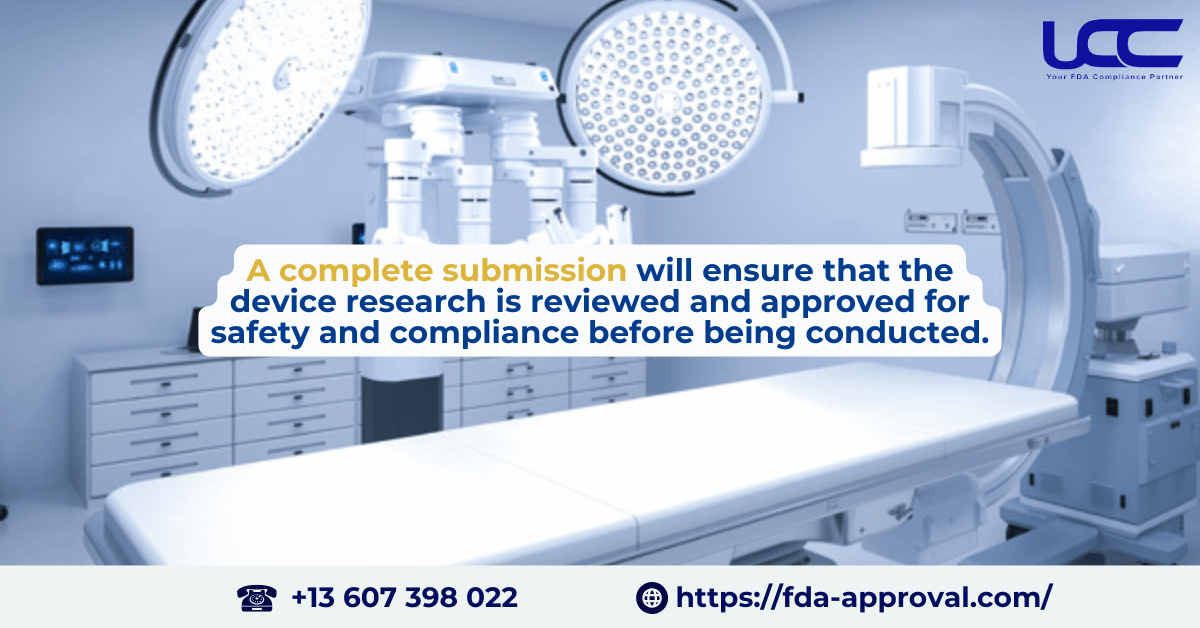IDE stands for FDA Investigational Device Exemption. So, what exactly is it, and when does a company need to apply for an IDE? In this article, UCC will provide you with comprehensive information regarding FDA Investigational Device Exemption guidance.

1. Overview of FDA Investigational Device Exemption (IDE)
In simple terms, an Investigational Device Exemption (IDE) is an FDA-issued permit allowing a medical device under development (not yet fully approved) to be tested in clinical studies. These studies aim to gather data on the device’s safety and effectiveness. The collected data is necessary for FDA approval, often through the Premarket Approval (PMA) process.

During the 510(k) process, typically applied to lower-risk devices or those similar to previously approved devices, clinical trials are rarely required. However, if a device undergoes significant modifications or has a new intended use, the manufacturer may need clinical evaluation to confirm its safety and efficacy in the new context.
In summary, an IDE is essential for most clinical trials involving new or modified devices. This requirement ensures participant safety and reliable data for subsequent approval steps.
2. Role of an IDE

When the FDA approves an Investigational Device Exemption, the sponsor can legally transport the medical device for research without needing to comply with other Food, Drug, and Cosmetic Act (FD&C Act) requirements that apply to commercially marketed devices. More specifically:
- No PMA or 510(k) submission required: During the research phase, the sponsor does not need to submit a PMA (Premarket Approval) or a 510(k) notification, as commercialization is not yet in process.
- No facility registration or device listing: The sponsor is not required to register the manufacturing facility or list the device while it is still in the experimental phase.
- Exemption from Quality System (QS) regulations: Most Quality System (QS) requirements, which are mandatory for commercial devices, are waived for investigational devices under an IDE. However, design control requirements (21 CFR 820.30) must be followed to ensure the device’s design meets safety standards during trials.
In brief, an IDE helps sponsors save time and costs during the testing phase, while maintaining critical design safety standards.
3. Eligibility for FDA Investigational Device Exemption
A sponsor or sponsor-investigator must submit an IDE application to the FDA in the following cases:
- Use of a high-risk device in research: If a medical device poses a high risk (potentially causing serious harm or danger to participants’ health), the sponsor must submit an IDE application to ensure the device’s safety and efficacy through FDA review and approval.
- Exception from informed consent requirement: According to regulation 21 CFR 50.24, if the study cannot secure participants’ consent (e.g., in emergency research where patients cannot decide and have no representatives available), the IDE application is mandatory to safeguard participants’ rights.
- At FDA’s request: The FDA may require an IDE application if it deems the study needs an additional level of review. If so, the FDA will inform the sponsor to submit the IDE application.
4. FDA Investigational Device Exemption Guidance: Submission Requirements
The sponsor must include the following detailed requirements in an Investigational Device Exemption (IDE) application submitted to the FDA to conduct human trials with a medical device:
- Sponsor’s name and address
- Previous studies report: All clinical, animal, and laboratory research on the device, including both published and unpublished adverse information
- Study purpose: Device name, intended use, study objectives, and duration
- Study protocol: Description of methodology and scientific analysis
- Risk analysis: Description of risks, mitigation strategies, reasons for study, and patient group description
- Device description: Components, materials, operating principles, and planned modifications
- Monitoring procedure: Study monitoring procedures and names/addresses of each monitor
- Additional records and reports: Other documents outside IDE Subpart G regulations
- Manufacturing procedure: Methods, facilities, production controls, packaging, storage, and installation of the device
- Investigator agreements: Sample agreements with investigators and their list
- Investigator’s signed certification: Confirmation that all investigators have signed, and new investigators will sign before participation
- IRB list and certification: List of IRBs that have reviewed or will review the study, with certification of their decisions
- Additional information: Names and addresses of associated facilities; device cost (if any); device labeling; informed consent form; references submitted; and any other information as required by the FDA.
This application ensures that the FDA reviews the device research for safety and legality before conducting it.

In summary, this article on FDA Investigational Device Exemption Guidance provides comprehensive information about IDE requirements and regulations. Through this article, UCC aims to help you understand the FDA Investigational Device Exemption process and regulations thoroughly. More importantly, UCC looks forward to collaborating with your business in the future to successfully navigate the U.S. market!



